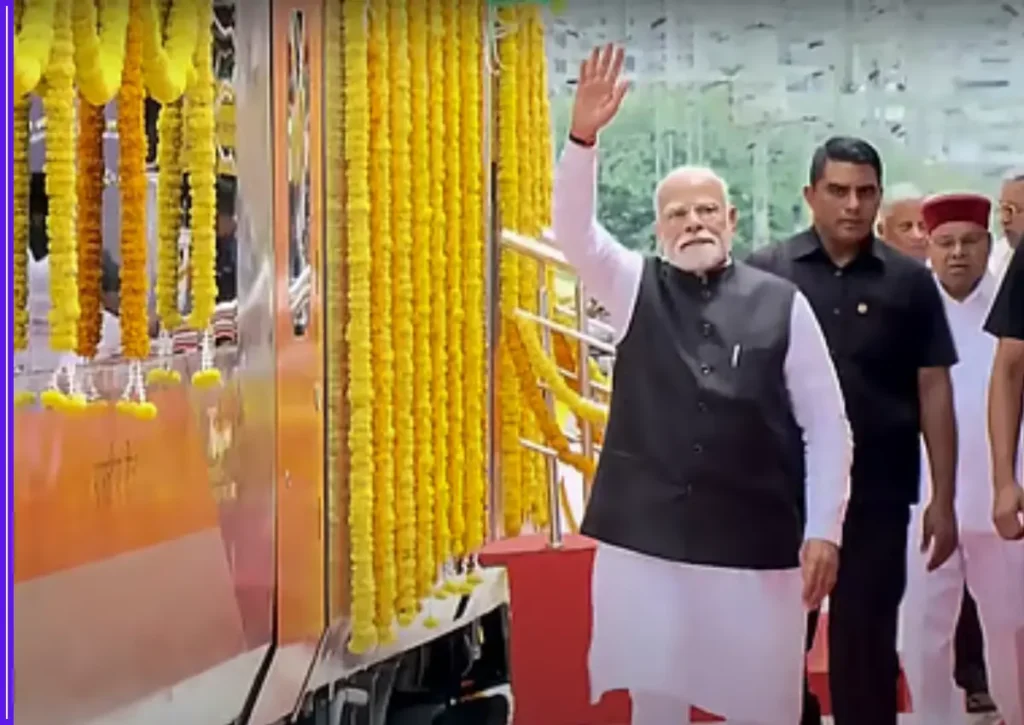Bengaluru’s metro map just gained a significant new link as Prime Minister Narendra Modi on Sunday inaugurated the long-pending Yellow Line, a 19.1-kilometre elevated corridor that stretches from RV Road to Bommasandra. With this addition, Namma Metro’s total operational length now stands at 96 kilometres, marking a major milestone in the city’s push for improved urban mobility.

Modi inaugurates Bengaluru Metro’s Yellow Line, boosting network to 96 km
The Yellow Line, built over eight years at a cost of roughly ₹7,610 crore, brings 16 stations into service and is designed to ease some of the worst traffic bottlenecks in South Bengaluru. The route runs through high-demand areas such as Silk Board Junction, BTM Layout, and Electronic City, linking major residential pockets with industrial hubs and IT corridors. For thousands of daily commuters, particularly tech workers, the line promises shorter travel times and less dependence on the gridlocked Hosur Road.
Speaking at the launch, Modi described the Yellow Line as “a step forward in Bengaluru’s journey toward becoming a model of sustainable public transport.” He was joined by Karnataka Chief Minister Siddaramaiah, Deputy Chief Minister D K Shivakumar, and other dignitaries for a short inaugural ride between stations, where cheering crowds gathered to witness the event.
Commercial operations will begin on August 11, with trains running from 5 a.m. to 11 p.m. Initially, services will operate every 25 minutes, but frequency is expected to improve once more rolling stock is deployed. Officials estimate the corridor will eventually handle over six lakh passengers daily.
The new line integrates with the city’s existing network at key points. RV Road connects to the Green Line, Jayadeva Hospital station will serve as an interchange with the under-construction Pink Line, and the busy Central Silk Board junction will link to the upcoming Blue Line. These connections are intended to reduce the number of vehicle trips on city roads and provide smoother cross-city travel.
The Yellow Line’s stations have been built with upgraded passenger amenities, escalators, lifts, and improved accessibility features. The system uses a 750V DC third rail for power and is equipped with modern signalling technology to ensure safety and efficiency. Authorities have also focused on last-mile connectivity, with provisions for feeder buses, shared mobility options, and pedestrian pathways around stations.
Urban transport planners believe the Yellow Line could be transformative for Bengaluru’s south-east corridor, home to some of the city’s fastest-growing employment zones. The Electronic City stretch alone is expected to see a substantial shift from private vehicles to metro travel, reducing pollution and congestion.
Sunday’s event also saw the Prime Minister flag off three new Vande Bharat Express trains and lay the foundation stone for Phase-3 of the metro, a 44.65-kilometre expansion project that will further extend the network with 31 additional elevated stations.
For Bengaluru’s long-suffering commuters, the Yellow Line represents more than just new infrastructure. It is the culmination of years of delays, construction challenges, and traffic diversions. Now complete, it offers a faster, cleaner, and more reliable alternative to battling the city’s clogged roads. As services roll out this week, expectations are high that the new corridor will live up to its promise of easing the daily grind for millions in India’s tech capital.








